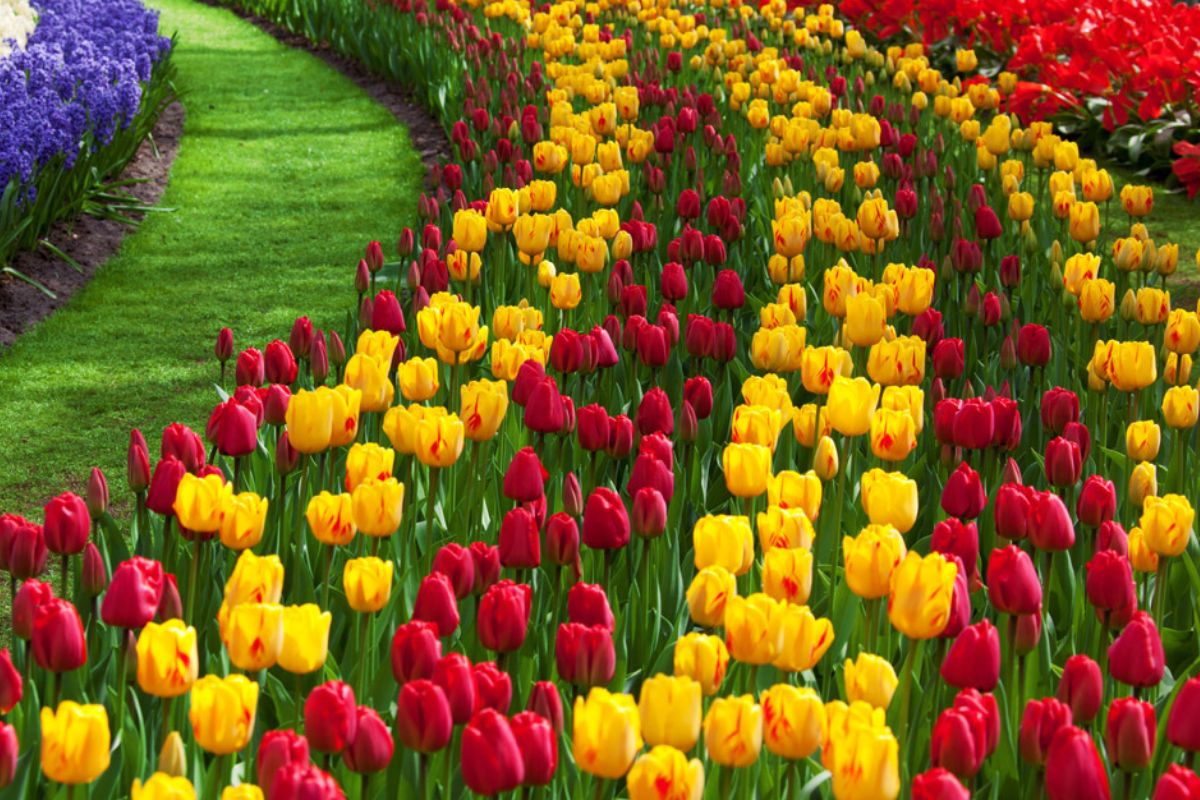Tesselaar Flowers – Combining Tradition and Sustainability for Floral Excellence

Tesselaar Flowers is in the floristry business that has gained more popularity because of its relevance to high-quality flowers, friendly environmental practices, and a century-old history. Passion, determination, and innovation set the pace for Tesselaar’s initial modest rise in the 1930s toward its now popular image as a distributor. This essay explores the history of Tesselaar Flowers, its growth, and its present role in shaping the floral business.
Table of Contents
ToggleThe establishment of Tesselaar Flowers
Cees and Johanna Tesselaar’s Arrival
Cees and Johanna Tesselaar arrived in Australia’s Dandenong Ranges in 1939, bringing a deep love of tulips as well as a strong work ethic. They started producing potatoes before focussing on flowers. It wasn’t long before they started growing bulbs and cutting flowers, laying the groundwork for what would eventually become a successful family business.
The Start of the Family Business
Tesselaar Flowers formally began in the 1960s, when Cees and Johanna established their cut flower business with the support of their sons Cees, Anthony, John, and Henk. The early success of the business was largely due to the family’s combined efforts. While Cees concentrated on farm production, his brothers Henk and John handled flower sales, and Anthony handled marketing. Together, they lay the groundwork for the company’s future expansion.
Growth & Expansion During the 1960s and 1980s
A Shift Towards National Distribution
It was during the 1980s that Tesselaar Flowers expanded to other Australian states. This was a turning point in the company’s history. The company now reaches more customers through the expanded channels of distribution, thereby offering high-quality flowers to a wider market. It is because of this expansion that the company has become what it is today- a national one.
Role of the Second Generation
The 1980s also saw the second generation of the Tesselaar family take on key responsibilities in the business. Each family member’s effort helps keep Tesselaar Flowers at the top of the floristry business. The company’s nationwide distribution infrastructure improved, allowing them to deliver flowers across Australia more easily and efficiently.
The 1990s and Third Generation Involvement
The Rise of New Leadership
The third generation entered the firm during the 1990s, which consisted of Daniel and Paul. They became crucial for the company’s activities. Daniel looked after the cut flower section while Paul headed Tesselaar Plants, home to the well-known Tesselaar Tulip Festival. Their thoughts and leadership inspired them to compete with the increasingly dynamic market scenario of Tesselaar Flowers.
In the early 2000s, the industry transitioned to wholesale and adapted to changing market demands. Tesselaar Flowers made a significant move from grower to wholesaler in the early 2000s. This change allowed the company to acquire flowers from the top farms in Australia and internationally. Tesselaar was able to supply the increased demand for high-quality flowers all year, particularly during peak seasons, by prioritising local producers while also tapping into international suppliers.
Tesselaar’s Partnership with Wafex Pty Ltd (2019)
Enhancing the Product Offering
Wafex Pty Ltd, a family-owned floral business with a long history, acquired Tesselaar Flowers in 2019. This collaboration created new potential for expansion, enabling Tesselaar Flowers to broaden its offers and streamline its supply chain. Tesselaar was able to expand its product offering and provide even better service to consumers across Australia thanks to Wafex.
Wholesale Market Locations Across Australia
One of the main reasons for the success of Tesselaar Flowers is its strategic location in major wholesale marketplaces across Australia. The company has built centres in Perth, Brisbane, and Monbulk to ensure that its flowers are constantly fresh and easily accessible. These stations are strategically positioned near supply regions and key transportation routes, allowing for more effective flower distribution.
Strategic Proximity to Airports and Farms
Tesselaar’s wholesale markets are strategically positioned near airports, so flowers can be shipped swiftly and effectively. This connection to fields helps the company supply its consumers with the freshest blooms while contributing to local growers.
The Purpose Behind Tesselaar Flowers’ Success
Sustainability and Supporting Local Growers
Tesselaar Flowers is on sustainability. In this case, the company bases its future of flowers on their partnerships with farmers and growers for flowers to get to ethically. This is a sustainability-first strategy by Tesselaar Flowers which has been the critical approach of the company toward the future and has given the company a great reputation in floristry.
Local and International Sourcing
Tesselaar Flowers is known for its wide flower collection, which includes both native flowers and classic blooms like roses, lisianthus, and iris. The company’s ability to get flowers from both domestic and international farms means its customers regularly have access to the best and most selections of blossoms.
Exclusive Varieties and Event-Ready Blooms
In addition to popular blooms, Tesselaar Flowers specialises in acquiring unique types and event-specific flowers. Tesselaar has the knowledge and resources to supply the ideal flowers for any occasion, whether it’s a wedding, a corporate event, or a seasonal demand.
Conclusion
Decades ago, Tesselaar Flowers developed a heritage growing from a small family firm to one of the leading names in the Australian floristry sector. By demanding leadership, sustainability, and local sourcing alongside a commitment to quality, Tesselaar continues to set the benchmark for excellence in the flower industry.
Published by Carol Jones
My aim is to offer unique, useful, high-quality articles that our readers will love. Whether it is the latest news, or trending topics I offer it all View more posts







